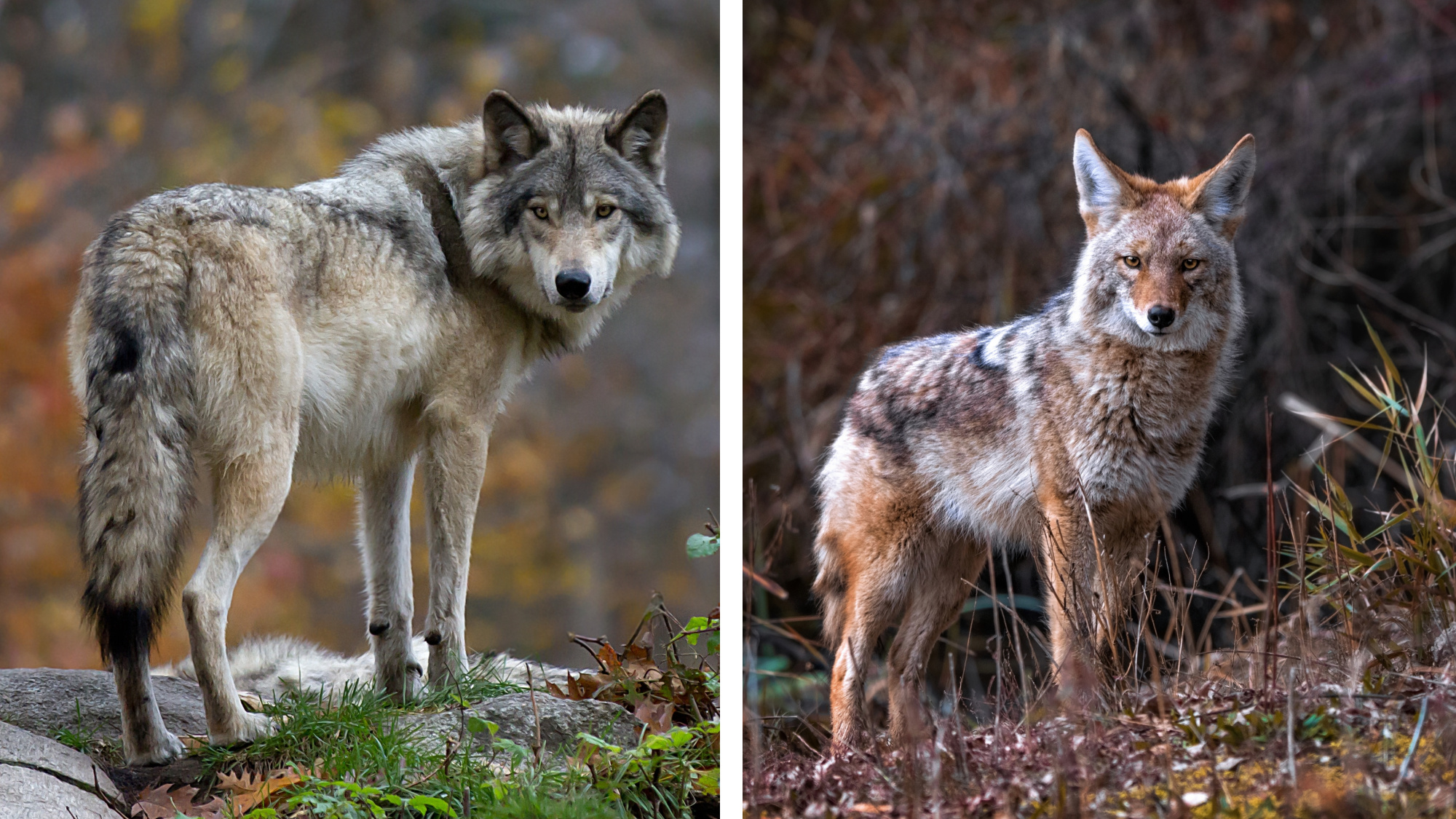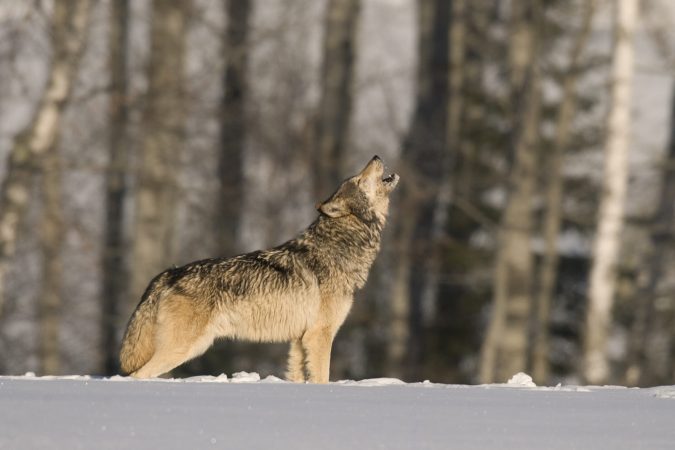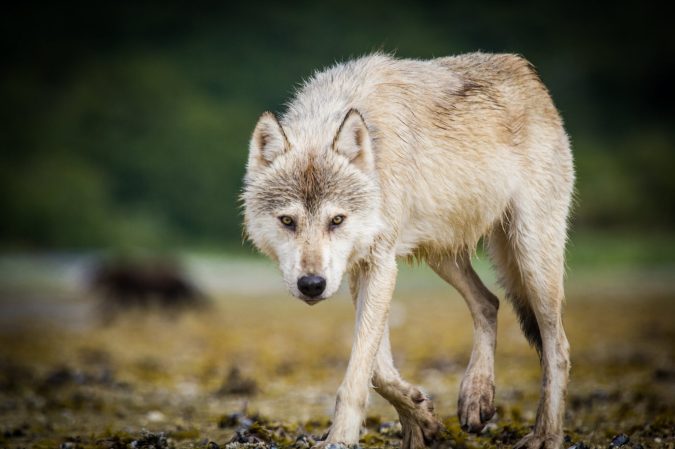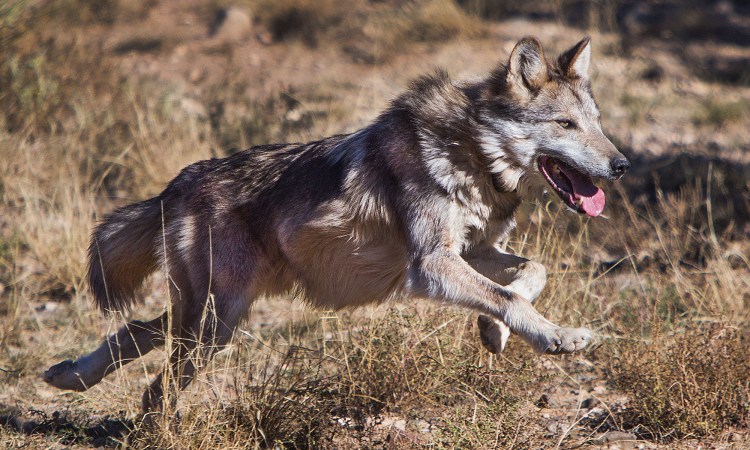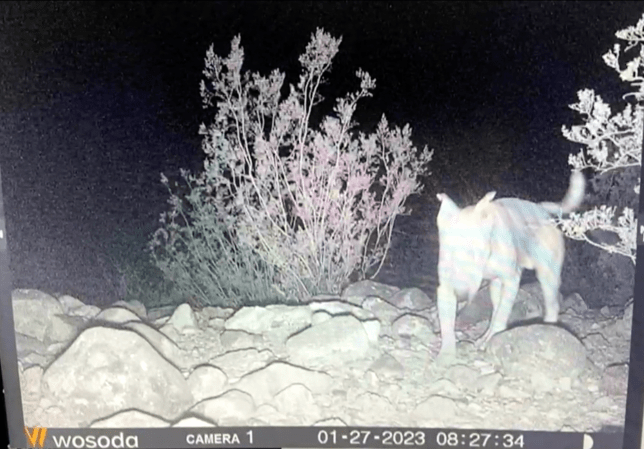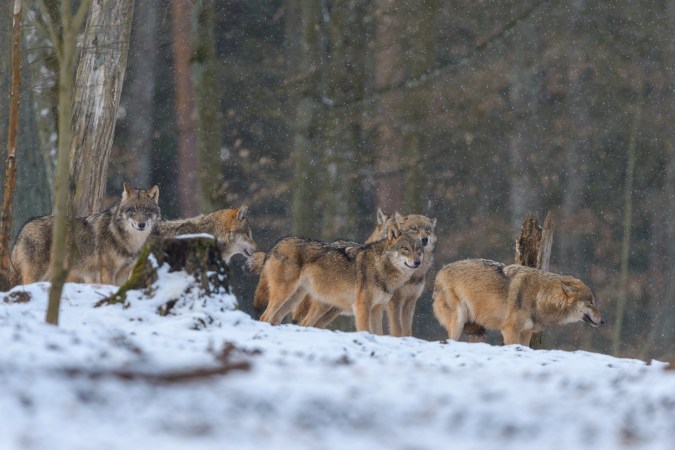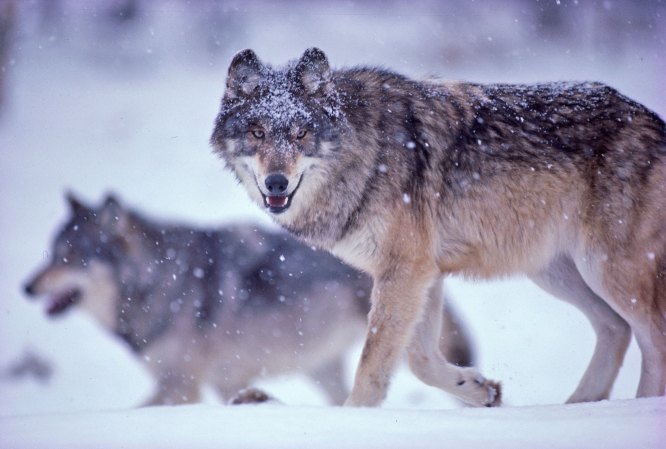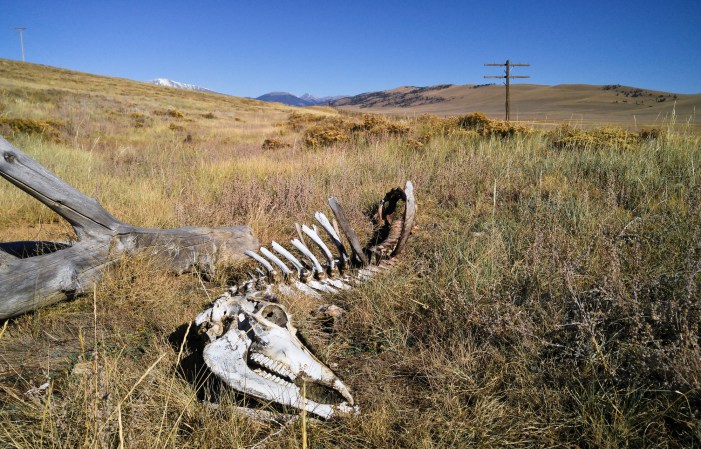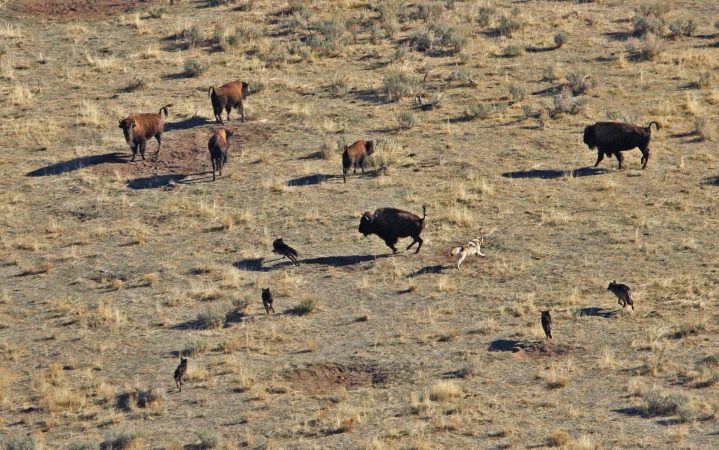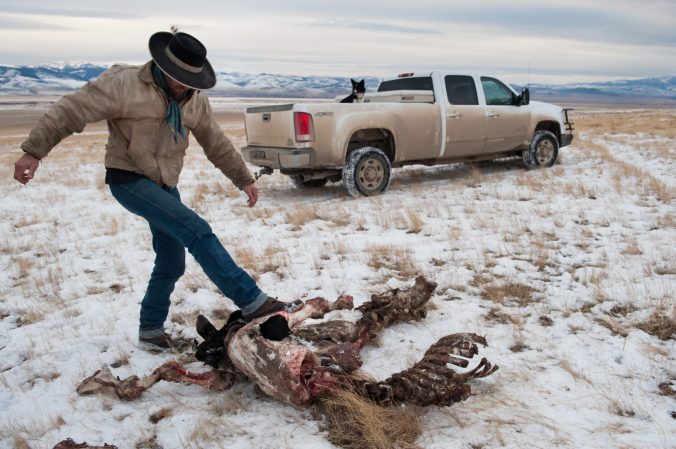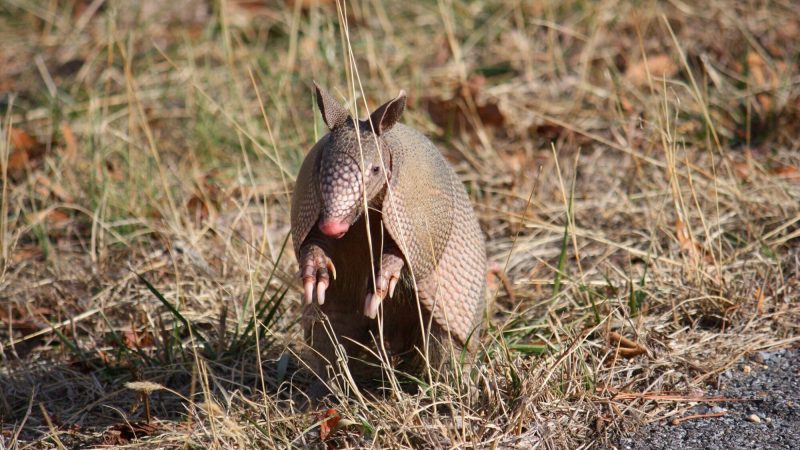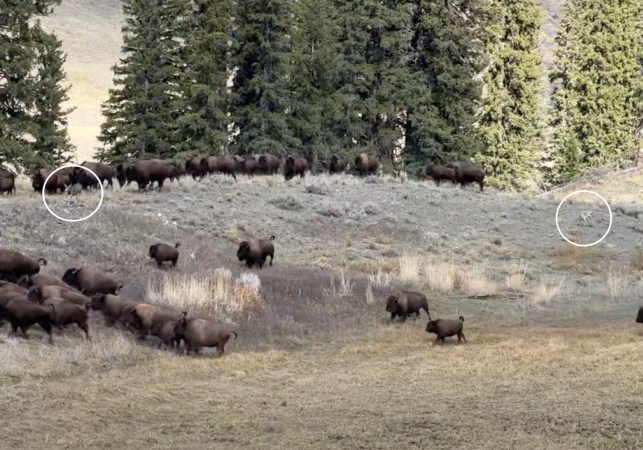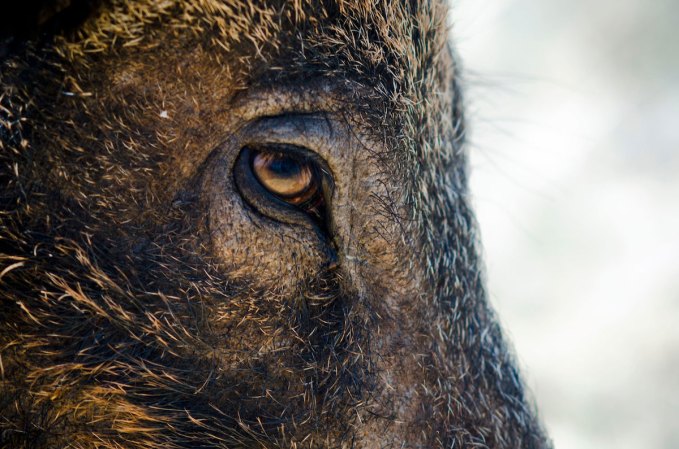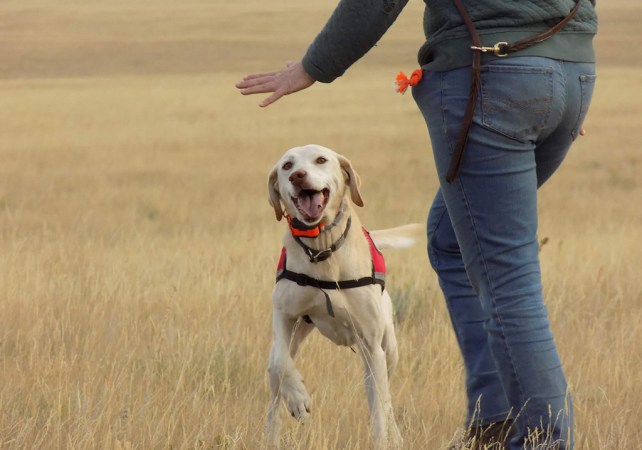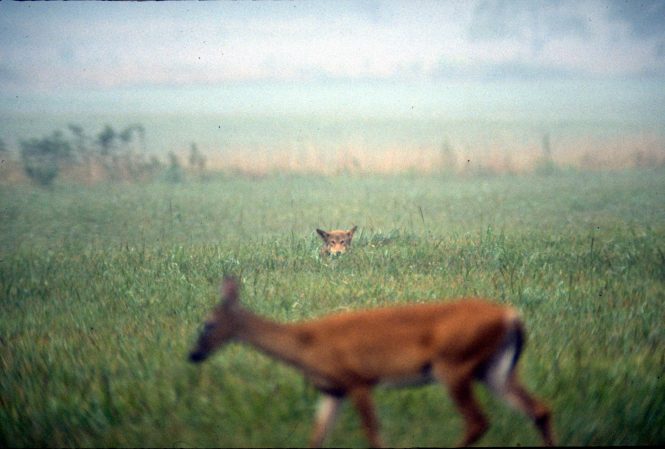At first it might seem easy to identify a wolf vs. a coyote. After all, adult wolves are two and even three times larger than adult coyotes. Still, people mistake one canine for the other all the time. Many people have seen coyotes from a distance and felt certain they were wolves. Others who don’t think wolves exist on certain landscapes will see a glimpse of gray fur on a trail camera and swear it’s a coyote. Young wolves especially resemble coyotes in their small size, and coyotes can take down larger livestock with all the power and ferocity of a wolf.
It’s worth knowing how to differentiate between a wolf and a coyote. Sure, both pose a risk to your off-leash pets, your chicken coop, and your local herd of whitetails. But one is considered a varmint species in most states, and hunting them is both legal and encouraged. The other is federally listed as either threatened or endangered in most places, and shooting one could land you in prison with a massive fine. Here’s everything you need to know about the similarities and differences between the two species.
Wolf vs. Coyote: The Basics
You will likely never get the chance to see a wolf and a coyote standing side-by-side. But if they did give you the opportunity, you would see two canines with distinct physical traits. The differences in size, build, length from nose-to-tail, and facial features would jump out first. If both species howled, observers would hear different pitches and patterns. And when the two eventually ran away, they would leave very different tracks behind.

Dan Stark, large carnivore specialist for the Minnesota Department of Natural Resources, rattles off these differences with ease. Minnesota has robust populations of both wolves and coyotes. The species don’t overlap much in their home ranges due to their competitive and territorial natures. But Stark explains how to identify either canine species with a high level of certainty.
The main differences in wolves vs. coyotes include:
- Physical size
- Facial structure
- Coloration
- Tracks
- Scat
- Behavior
- Habitat needs
- Diet
Physical Differences
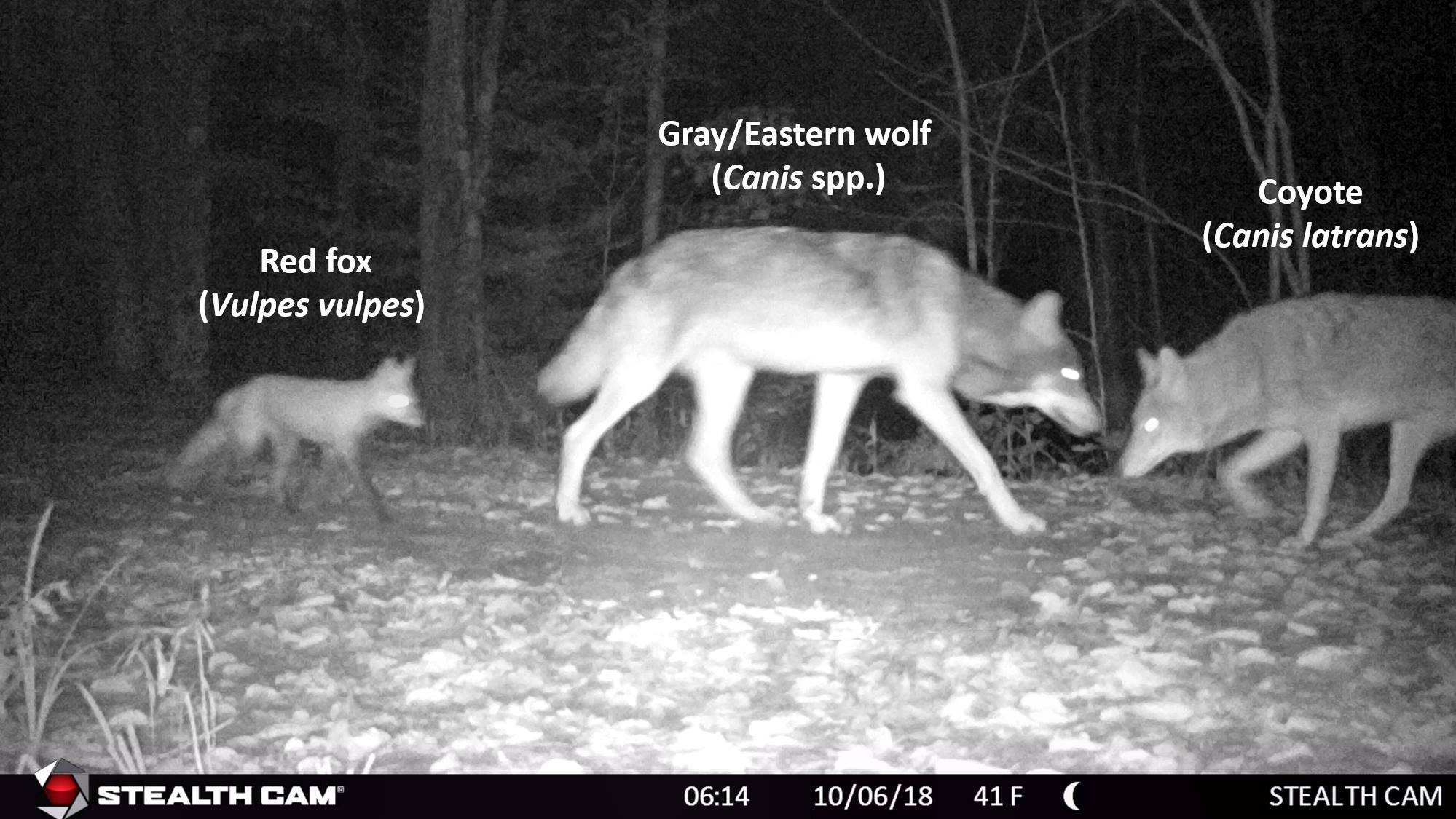
In short, wolves:
- Are bigger
- Have blockier heads and smaller ears
- Have longer legs and bigger paws
- Have slightly sloping backs
- Can have white, black, buff, or reddish coats
Coyotes, on the other hand:
- Are smaller
- Have pointer faces and bigger ears
- Look longer from nose to tail with shorter legs
- Are more fox-like in their build
- Are mostly buff-tan but are occasionally black
Adult wolves can weigh 80 to 120 pounds, while coyotes top out around 50 pounds. (Coyotes get bigger on the East Coast than they do in the Midwest and West, and wolves in Alaska can reach 145 pounds.) But young wolves can be coyote-sized, which complicates matters. Instead of relying on size alone, look at the build of the animal, Stark says.
“Wolves tend to be more blocky [in the head]. They have shorter muzzles and shorter, rounder ears whereas a coyote will have a more pointed muzzle and more pointed ears,” he says. “Coyotes tend to look longer than they are tall, whereas a wolf has much longer legs in relation to its body size. They look a little more lanky, which would definitely stand out.”
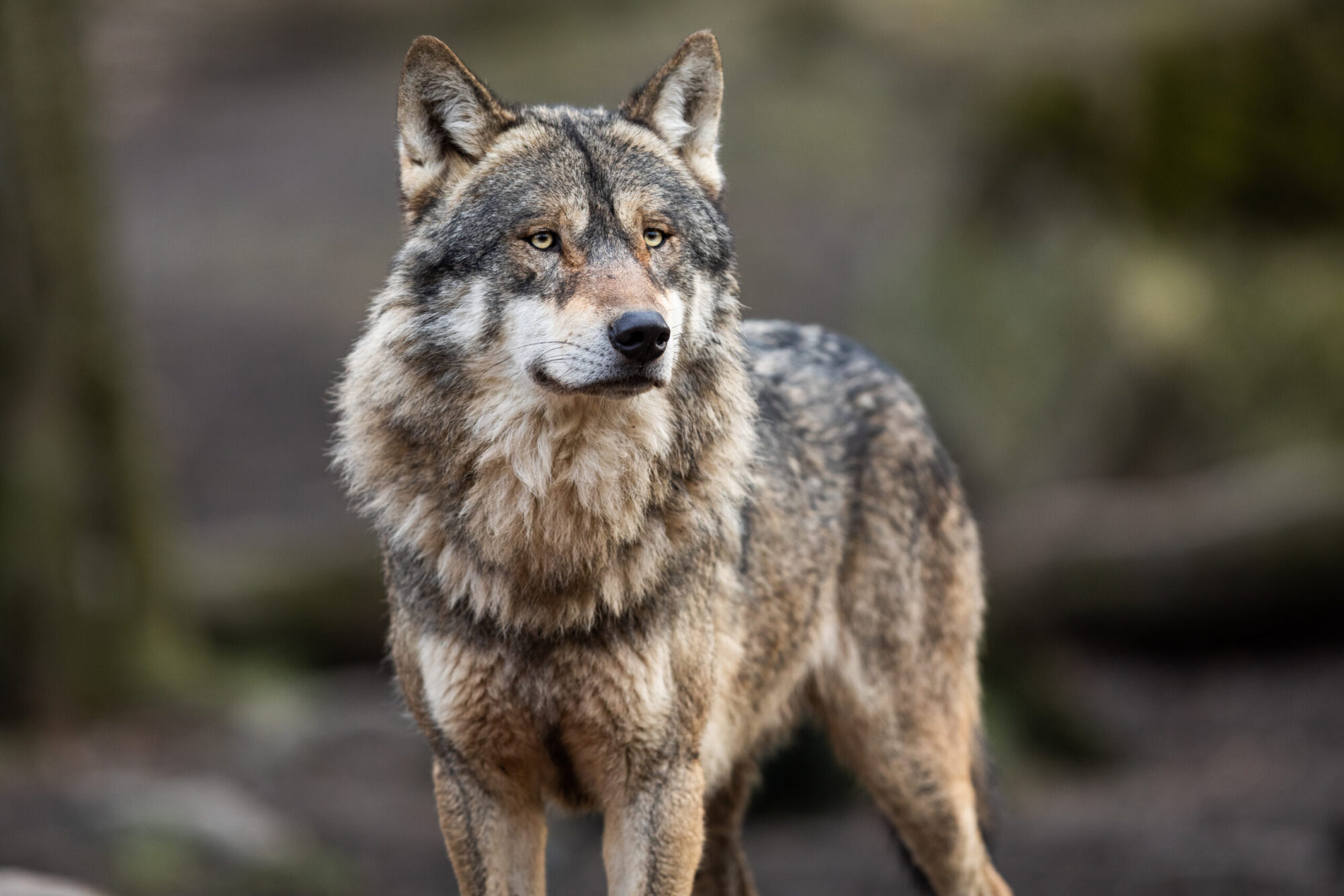
Wolves have big paws and sloping backs reminiscent of huskies and German shepherds. Adults are usually 5 to 6 feet from nose to tail, Stark says. Coyotes, on the other hand, have a more fox-like build. They stand shorter at the shoulder and look long from nose to tail. Adults can reach up to 4 feet in length. Also similar to foxes, coyotes have sharper, more angular features with more pronounced ears.
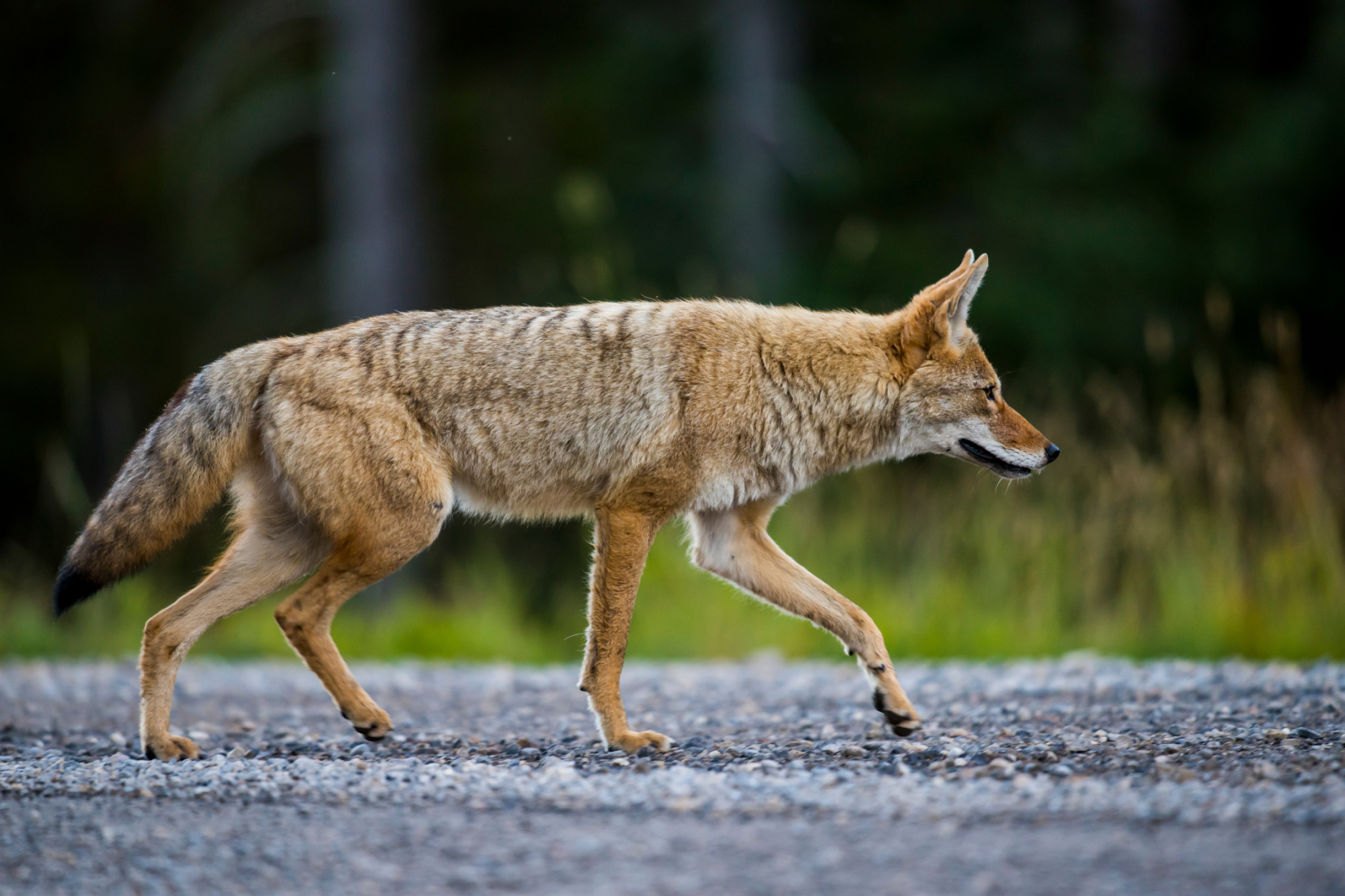
As for their coat coloration, while wolves can have similar coloration to coyotes, they can also range from white to black. Coyotes, on the other hand, are consistently some variation of a gray-buff color, although the very rare black coyote does also exist.
Wolf Diet vs. Coyote Diet
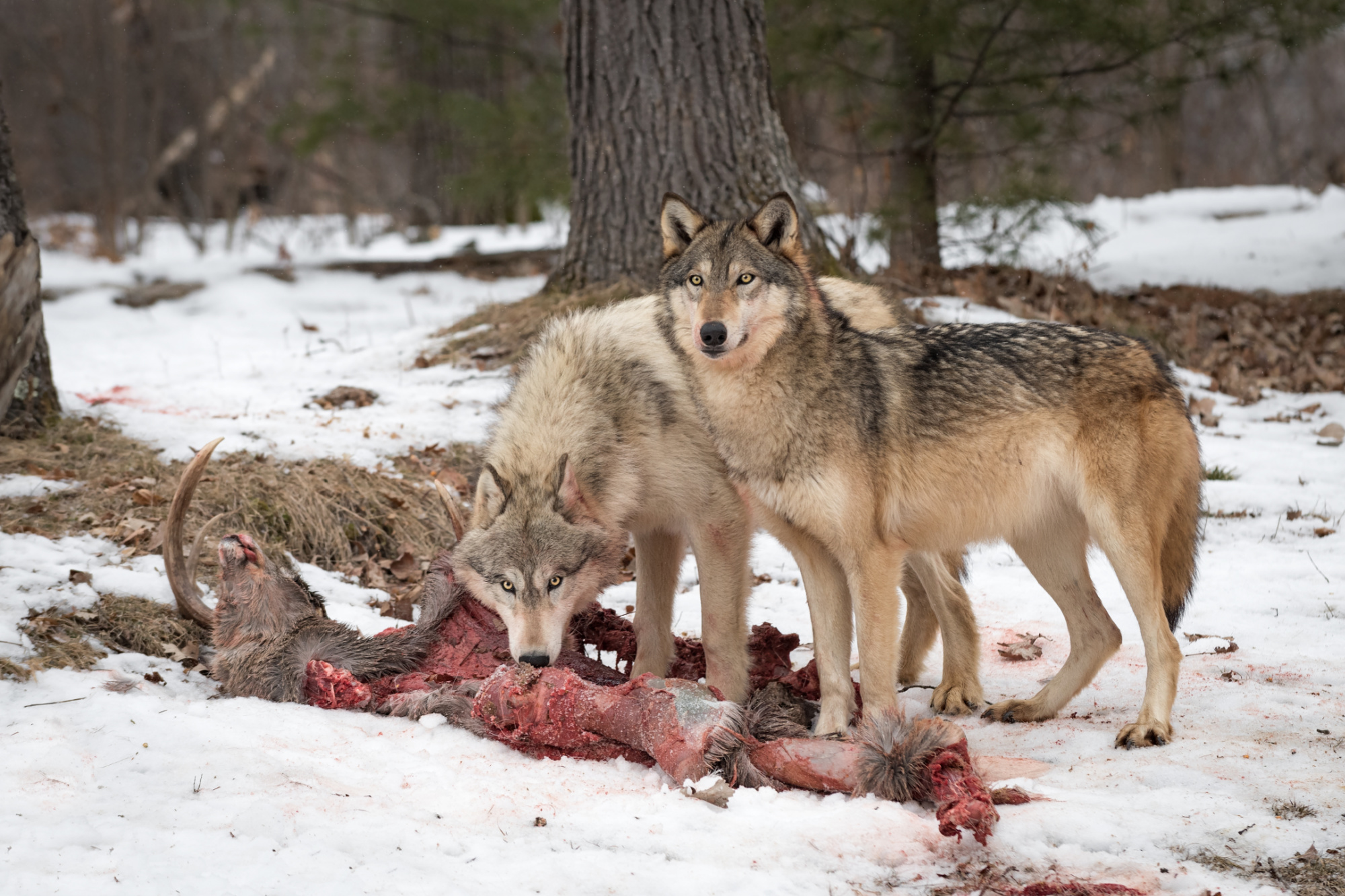
Coyotes are considered scavengers, while wolves are considered effective hunters. If you want to understand how wolves hunt, think about their pack dynamic. They’re able to take down very large ungulates that weigh hundreds of pounds. As a result, their diets mostly consist of red meat.
Coyotes, on the other hand, are more generalists, Stark says.
“Coyotes have more variety in their diet,” he says. “They eat everything from vegetation to insects to small mammals to deer. They rely on different sources of food that are available at different times of the year, while wolves are mostly focused on deer, moose, and elk. Coyotes will eat fruit and even bugs, like grasshoppers.”
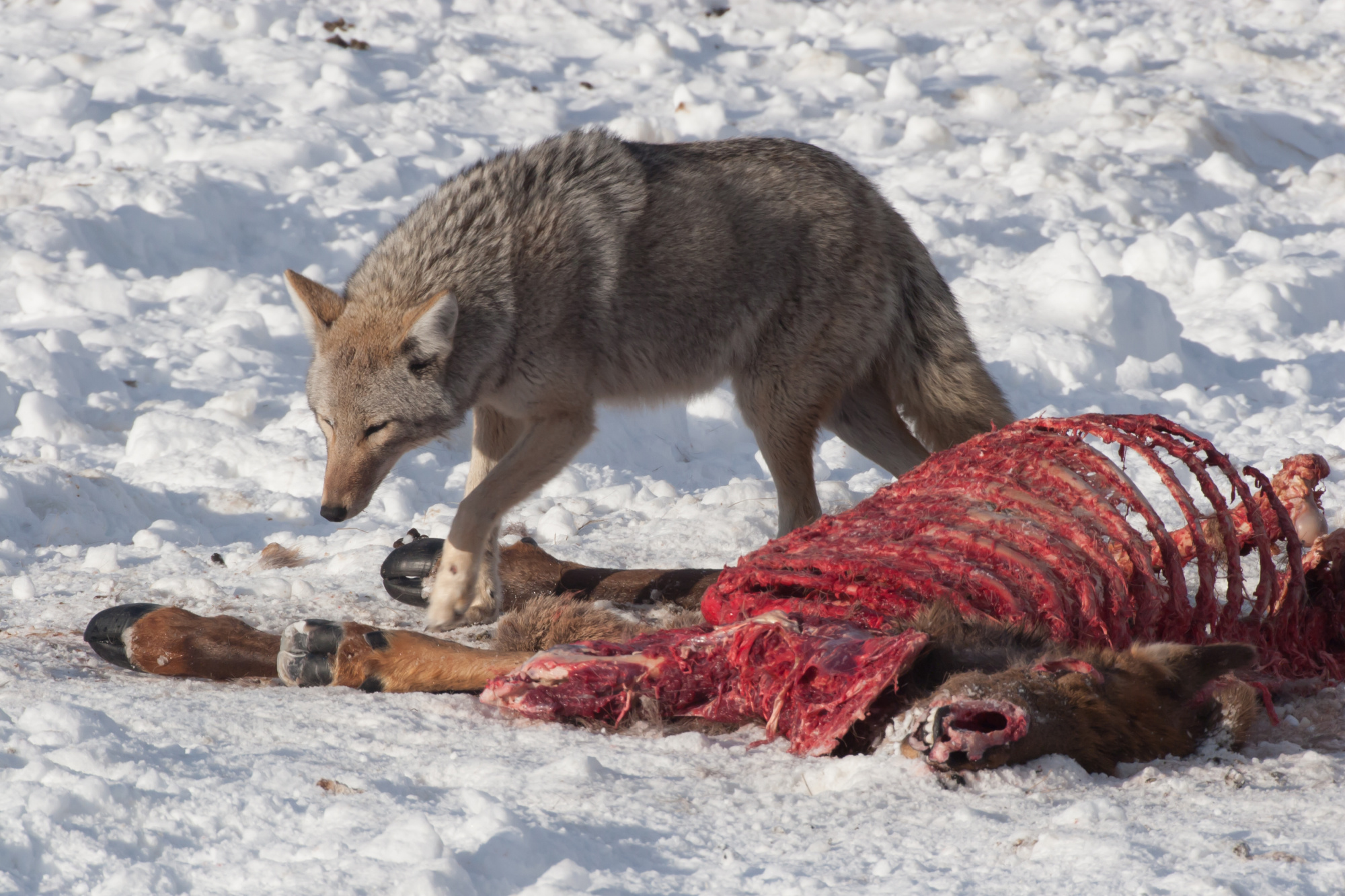
Both species also prey on livestock and domestic pets. Surprisingly, coyotes committed almost 10 times as many adult cattle depredations in 2015 as wolves did, accounting for 40.5 percent of predator-caused cattle loss nationally. This is likely because there are far more coyotes on the landscape than wolves.
Tracks and Scat
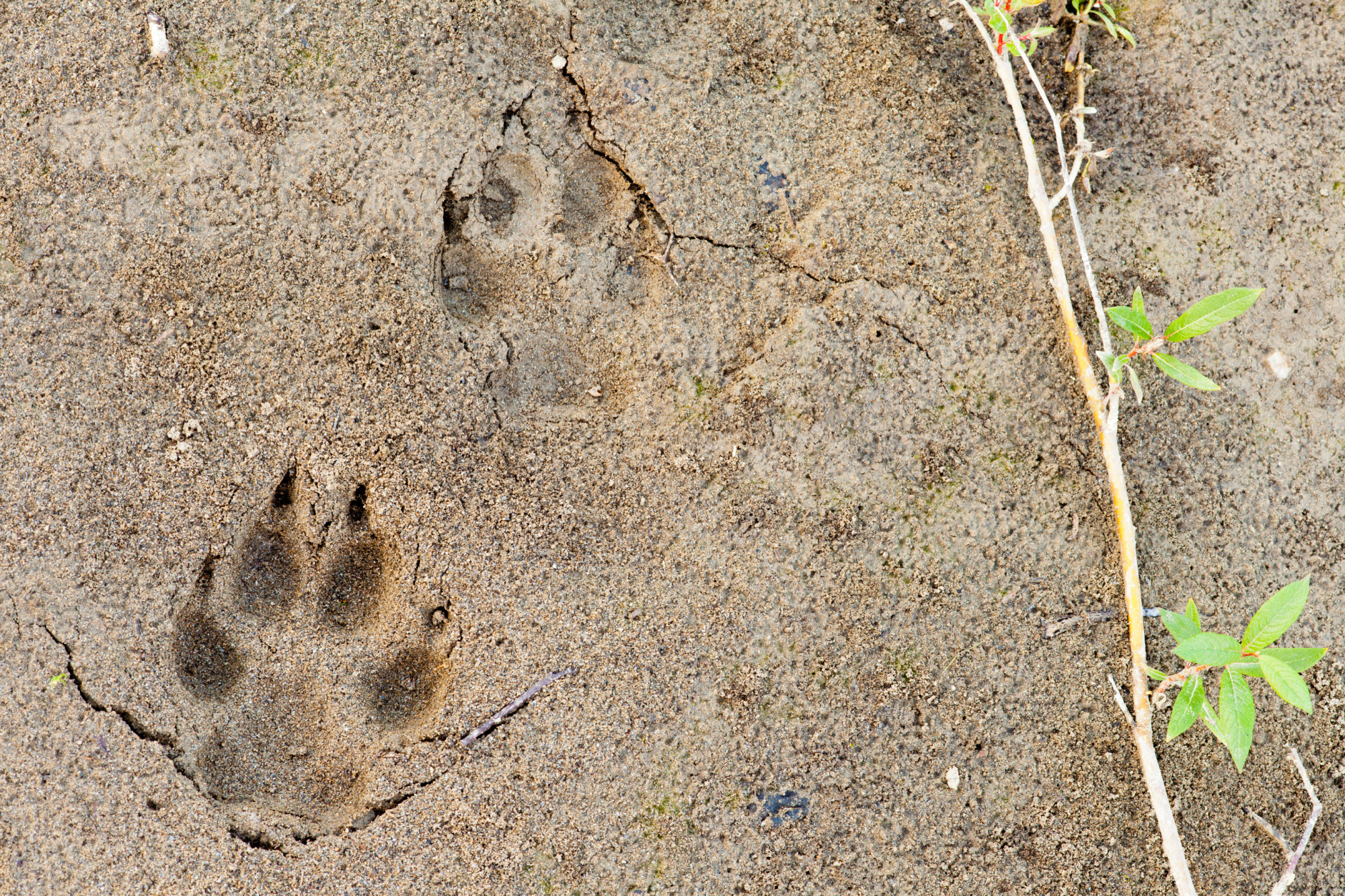
It’s good to know if either species is nearby, especially if you’re hunting or hiking with a dog that could be perceived as competition. But if you’re on a trail that sees heavy dog use, it can be tricky to tell if a track belongs to a wolf vs. a coyote or a domestic pet.
Both wolf and coyote tracks tend to be longer front-to-back and more narrow side-to-side than a domestic dog track. Adult wolf tracks will also be generally bigger than most domestic dog tracks. They also dwarf coyote tracks.
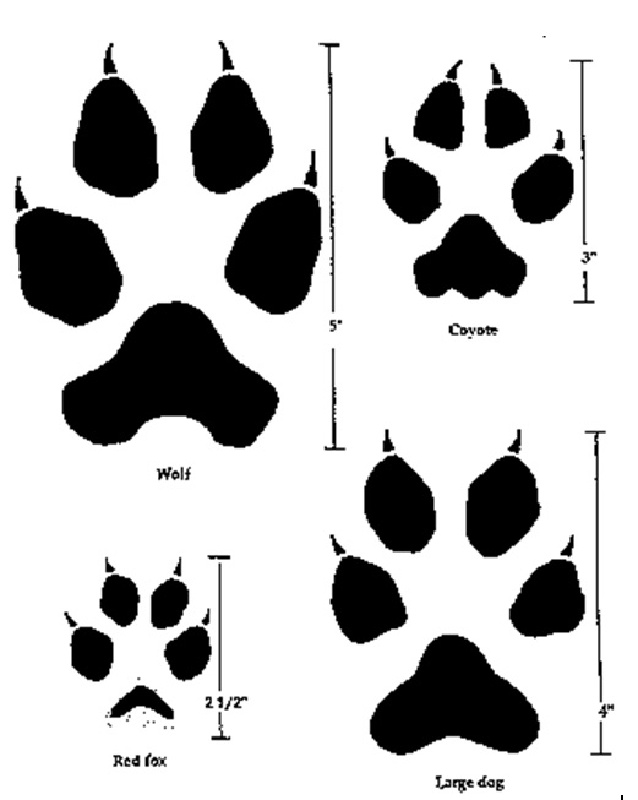
“A wolf track is nearly twice the size of a coyote’s,” Stark says. “A wolf track may be 4 inches across, while a coyote’s is maybe 2.5 to 3 inches.”
As the Wisconsin Department of Natural Resources points out, wild wolves and coyotes usually travel in a purpose-driven straight line to get from point A to point B, while domestic dogs will meander, sniff, chase squirrels, and bound back to their humans. Big, narrow tracks following a consistent trotting pattern are something to look out for.
Scat is easier to identify. Wolf scat will be at least an inch in diameter, and can reach up to 7 inches in length, with tapered ends frayed with hair. Coyote scat will look similar but smaller, and with more hair from small furbearers than large ungulates. Domestic dog scat looks nothing like scat from either wild species, since it’s full of dog food and lacks hair (unless your dog eats the occasional rabbit or squirrel, that is).
Population and Range
A reliable population estimate for coyotes across the United States doesn’t seem to exist, although they live in 49 of the 50 states (with the exception of Hawaii) and number in the tens and hundreds of thousands in more than half of their range states, according to this round-up of state agency data. With that in mind, it’s safe to say the United States is home to over a million coyotes. In contrast, the population of gray wolves is around 5,500 in the Lower 48 and between 8,000 and 11,000 in Alaska, according to the International Wolf Center.
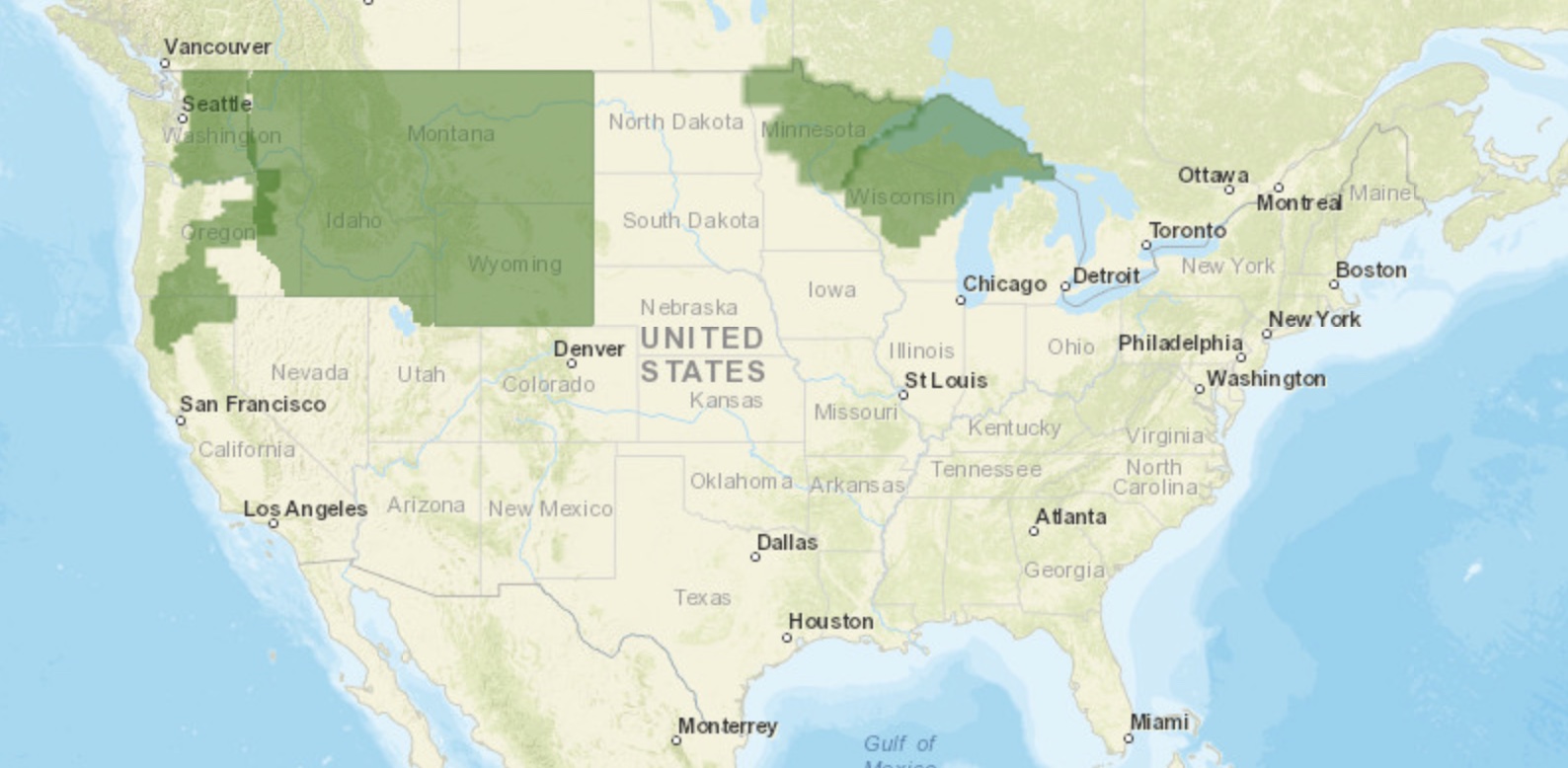
While the Minnesota DNR doesn’t keep track of the state’s coyote population, based on hunter and trapper harvest data, Stark estimates the number is somewhere around 100,000 coyotes, vs. wolves, which are much scarcer. The last wolf count from the winter of 2022 put the population at around 2,700. But those fewer wolves need much more space to roam and hunt than the heavily-populated coyotes do.
“The last wolf range estimate was about 40,000 square miles. Minnesota’s about 89,000 square miles, to give you an idea of their range size,” Stark says. “That’s been pretty consistent for the last decade or so. They’re mostly in the forested counties where we have more public lands, less agriculture, lower road density, and lower population density.
“Average wolf pack territories are about 40 to 50 square miles,” he continues. “[The size is] mostly related to prey density, so where there’s a higher density of deer those territory sizes tend to be smaller, but where deer are spread out more they might have bigger territories to find enough deer to meet their needs.”
Wolves occupy 31 counties in the northern part of Minnesota, Stark says. As for coyote range, while they do occur statewide, their population density is much lower in the northern region where wolves roam.
“Coyotes tend to occupy a smaller area, maybe up to 10 square miles but it could also be just a couple square miles. They’re much more adaptable,” Stark says. “They can find a niche in an area that might be more developed with more human activity, compared to wolves who seem to need a bigger, more wild landscape.”
These preferences are why we’re more likely to see coyotes near a shopping mall, on a busy trail, or on the side of the road. Not only are wolf populations significantly smaller, but they have lower tolerances for human habituation overall.
Breeding and Pack Mentality
Both species breed from late January to early March, carry litters of four to seven pups, and go through 60- to 65-day gestation periods. While wolves are notorious for living, hunting, and traveling in large packs headed by mating pairs with multiple litters, packs of coyotes tend to be smaller and more organized like a nuclear family—two mating alphas and a few younger subordinate members—during certain times of the year. Pups will stay with the pack for a year before splitting off.
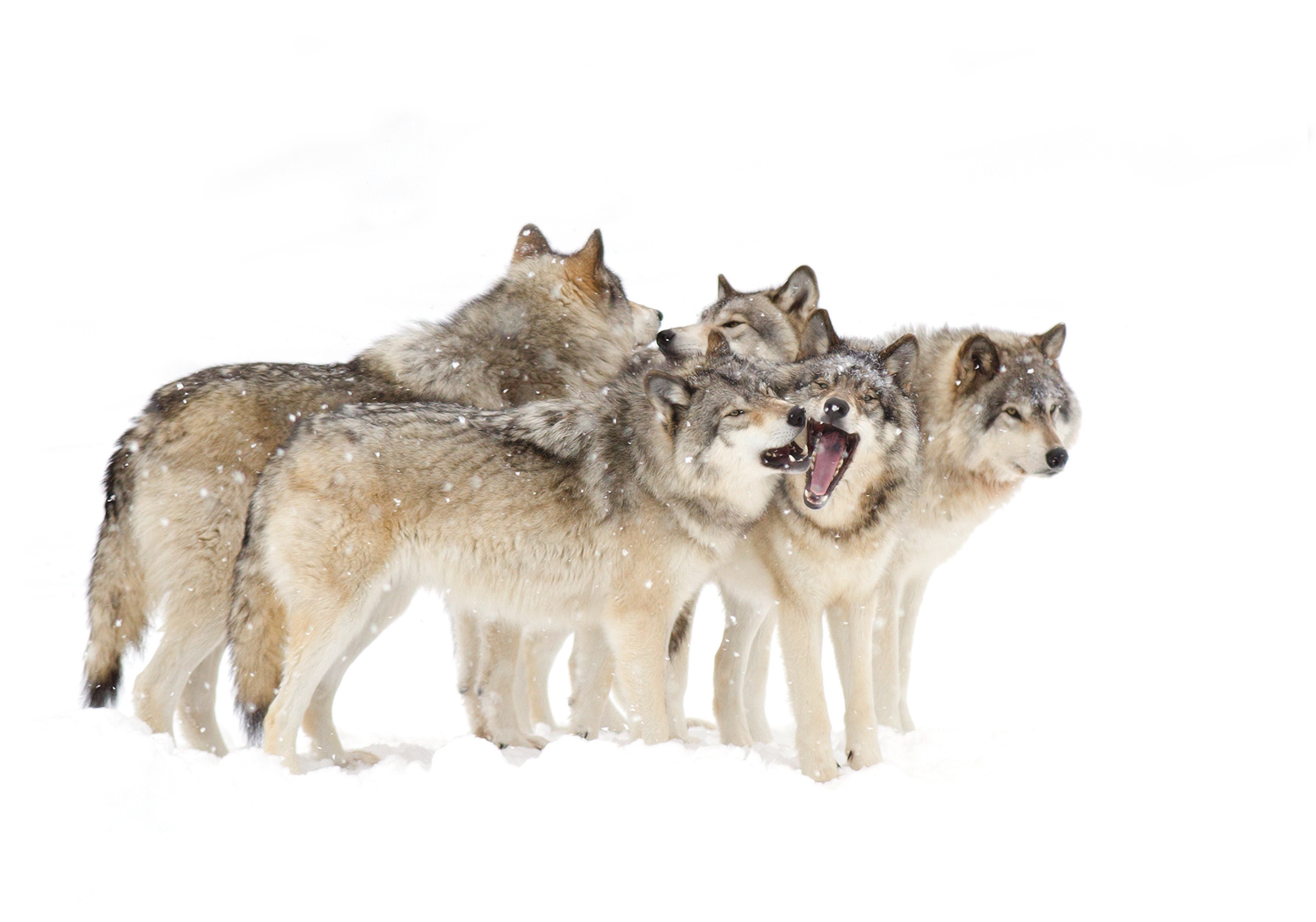
Outside of breeding and pup-rearing seasons, coyotes will exhibit more solitary behavior. This is similar to the behavior of a lone wolf, Stark says.
“There are a number of wolves that, as they reach a breeding age, will leave the pack and disperse,” he says. “It’s hard to track those individual wolves, because they can cover a lot of ground.”
When Stark says “a lot of ground,” he’s not kidding. Lone wolves can cover thousands of miles in short periods of time. But wolves aren’t the only ones with wide-ranging journeys. If you want to know how far coyotes can travel, just look to the collared lone coyote that biologists tracked through a 192-mile dispersal, or the three lone coyotes that have been documented traveling at least 300 miles since 1978. Another coyote took a shocking 544-mile trip across Manitoba and Saskatchewan in 1986.
Do Wolves Kill Coyotes?
Biologists have collected lots of evidence of wolves outcompeting and killing coyotes whenever the two species meet each other, which frequently happens at carcass sites. Not only do wolves outsize coyotes, but in many interactions biologists tracked, they also outnumbered them, giving them the ultimate advantage. In one study, 91 percent of 337 wolf-coyote interactions resulted in wolves dominating coyotes, and 7 percent resulted in the wolves killing the coyotes.
Hunting Wolves vs. Hunting Coyotes
Wolves are a federally protected species in most parts of their range. Neither the Alaska nor the Northern Rocky Mountain populations are federally listed, but the population in Minnesota is listed as threatened and the rest of the population is listed as endangered, according to the U.S. Fish and Wildlife Service. State agencies in Alaska, Montana, Idaho, and Wyoming are in charge of season-setting and permitting for regulated wolf hunting and trapping.
Coyote hunting is a different story. One of the more controversial topics in wildlife management nationwide, coyotes are more typically managed as a nuisance wildlife or predator species than a game species. Along with nutria, feral hogs, pythons, and other nuisance wildlife, they are often subject to hunting tournaments and contests with cash prizes. (Eight states have banned hunting contests and New York and Oregon are currently considering bans of their own.)
Either way, coyote hunting is a popular activity that is legal and often unregulated by either federal or state agencies. In Montana, for example, no permit or fee is required to kill coyotes. You can do so year-round as either a resident or nonresident. Nonresident trappers, on the other hand, do need a license. Read up on what the best coyote calibers are, as well as how to trap coyotes and what to look for in the best coyote calls.
Will a Coyote Attack You?
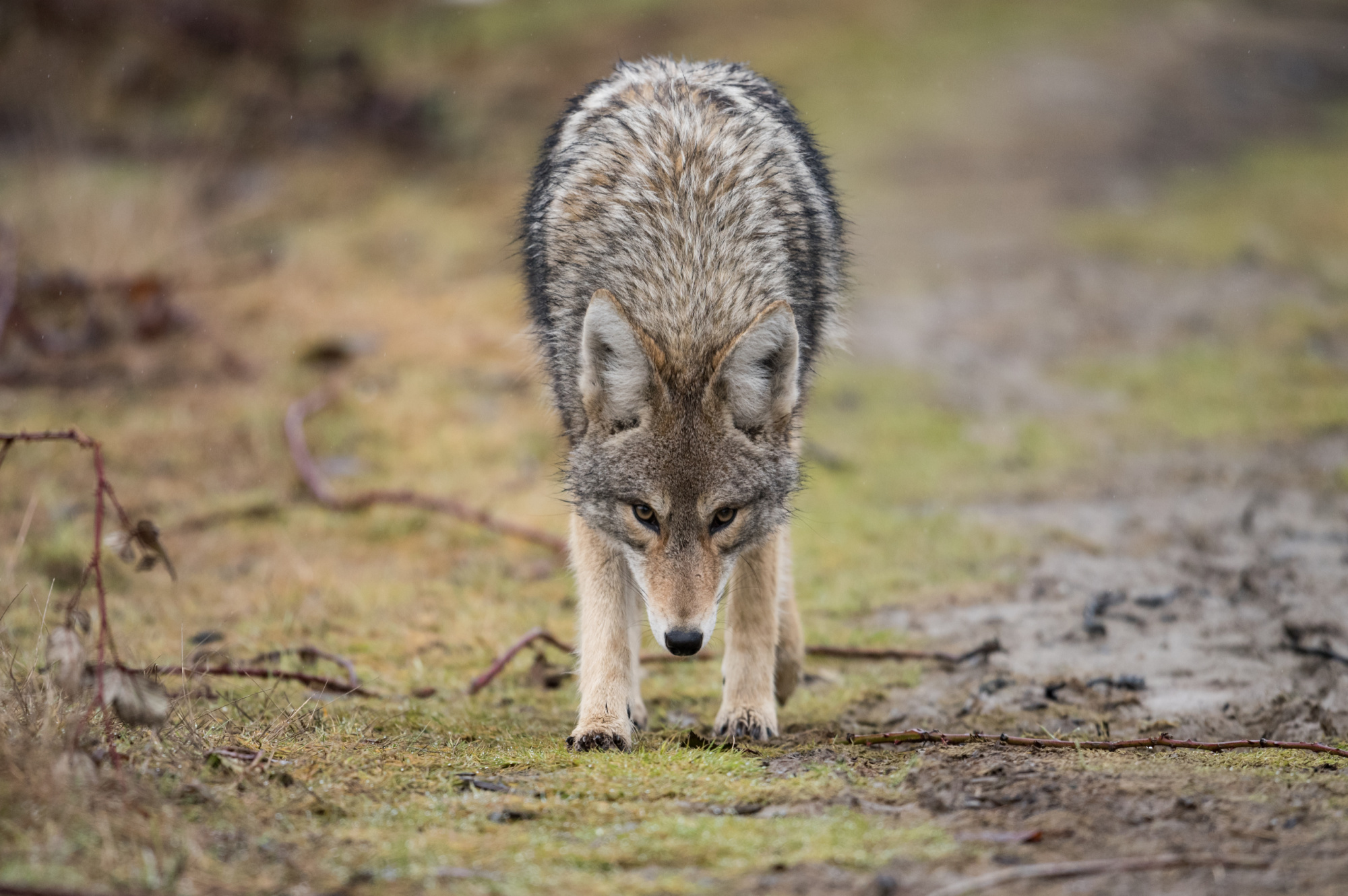
If you’ve ever encountered a coyote at close proximity, you’ve probably wondered “do coyotes attack humans?” The short answer is occasionally. Like other scavengers, coyotes can become habituated to humans pretty easily, which means they not only feel comfortable around us, but they also come to expect food from us. When food doesn’t magically appear, they can turn aggressive.
Like any other wild animal, coyotes can also become aggressive during breeding season or when defending young.
Will a Wolf Attack You?
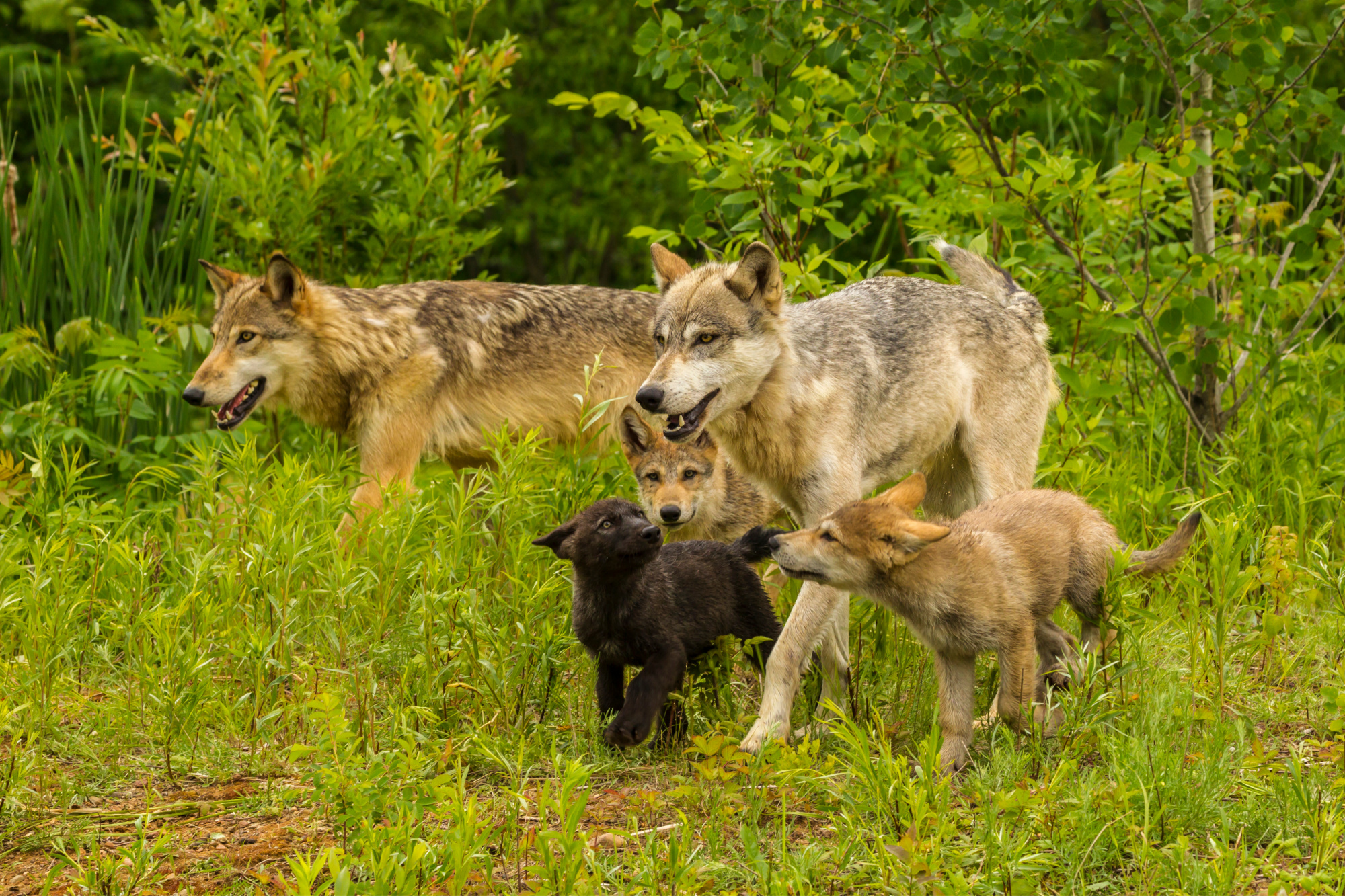
Similarly, you might have pondered whether wolves attack humans. The answer is a bit different. On the whole, wolves live further from dense concentrations of human development than coyotes do. They’re also focused on meat, which means they’re far less likely to go digging through a rural resident’s trash for old peanut butter jars like a bear or a coyote might. But this doesn’t mean that they can’t become habituated to humans.
If wolves become aggressive toward humans, it’s likely in the backcountry and a result of the human getting too close to a kill site or a den of pups or otherwise making the wolves feel threatened. While wolf attacks on humans are exceptionally rare, there are plenty of stories about close encounters that either resulted in conflicts (some fatal) with domestic dogs, or humans climbing trees to avoid the wolves.
Wolf vs. Coyote FAQs
Yes, coyotes and wolves have hybridized in the past. In fact, Eastern coyotes are considered a distinct species from coyotes in other parts of the U.S. due to the presence of wolf and even domestic dog DNA. As a result, these “coywolves” are larger than more genetically pure coyotes and can exhibit some other wolf-like characteristics.
Yes, coyotes howl like wolves. Coyote howls are higher-pitched and intermixed with various yips, Stark says, while wolf howls are deeper and might include barks and growls.
A wolf’s jaws can generate up to 400 pounds per square inch (psi) of bite force, according to the International Wolf Center. For comparison’s sake, a human bite generates about 120 psi and an adult domestic dog generates around 320 psi.
Final Thoughts on Wolf vs. Coyote
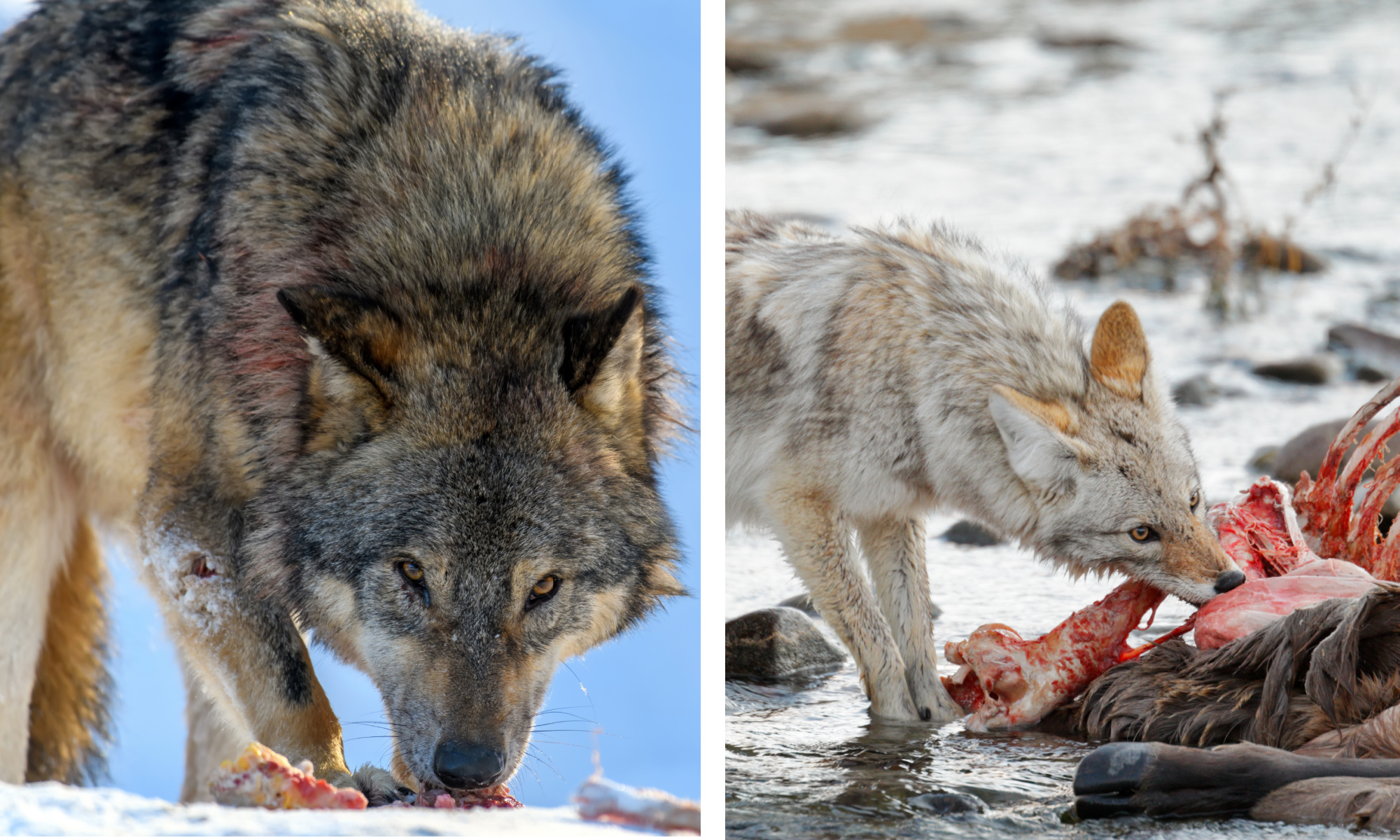
Wolves and coyotes share some traits. They’re both canine species. They follow the same reproductive calendars. They often have similar coat colorations, and they’ve even been known to interbreed. But the differences in the wolf vs. coyote comparison far outweigh the similarities—primordial among them being the population of each species nationwide. In Minnesota, Stark and the DNR take very different approaches to tall, blocky-headed, evasive wolves versus short, pointy-faced, ubiquitous coyotes.
Read Next: Hunting Coyotes on Frozen Lake Superior
“Minnesota has a thriving wolf population that’s been doing well for decades. We have a wolf management plan that was just recently updated that we will use to guide our wolf conservation and management efforts going forward for the next decade or so,” he says. “But the coyotes don’t seem to need much help. They’re pretty prolific.”

